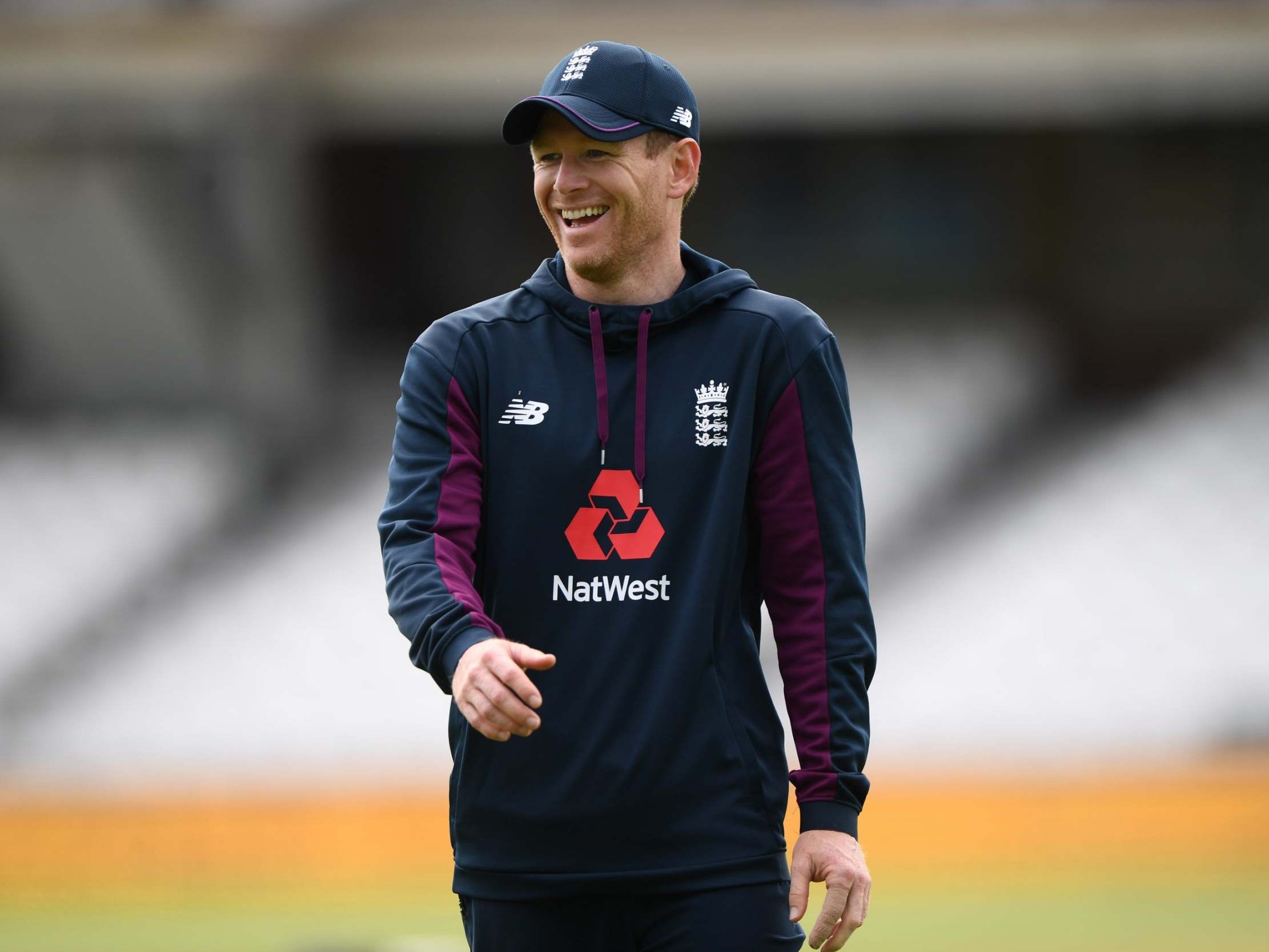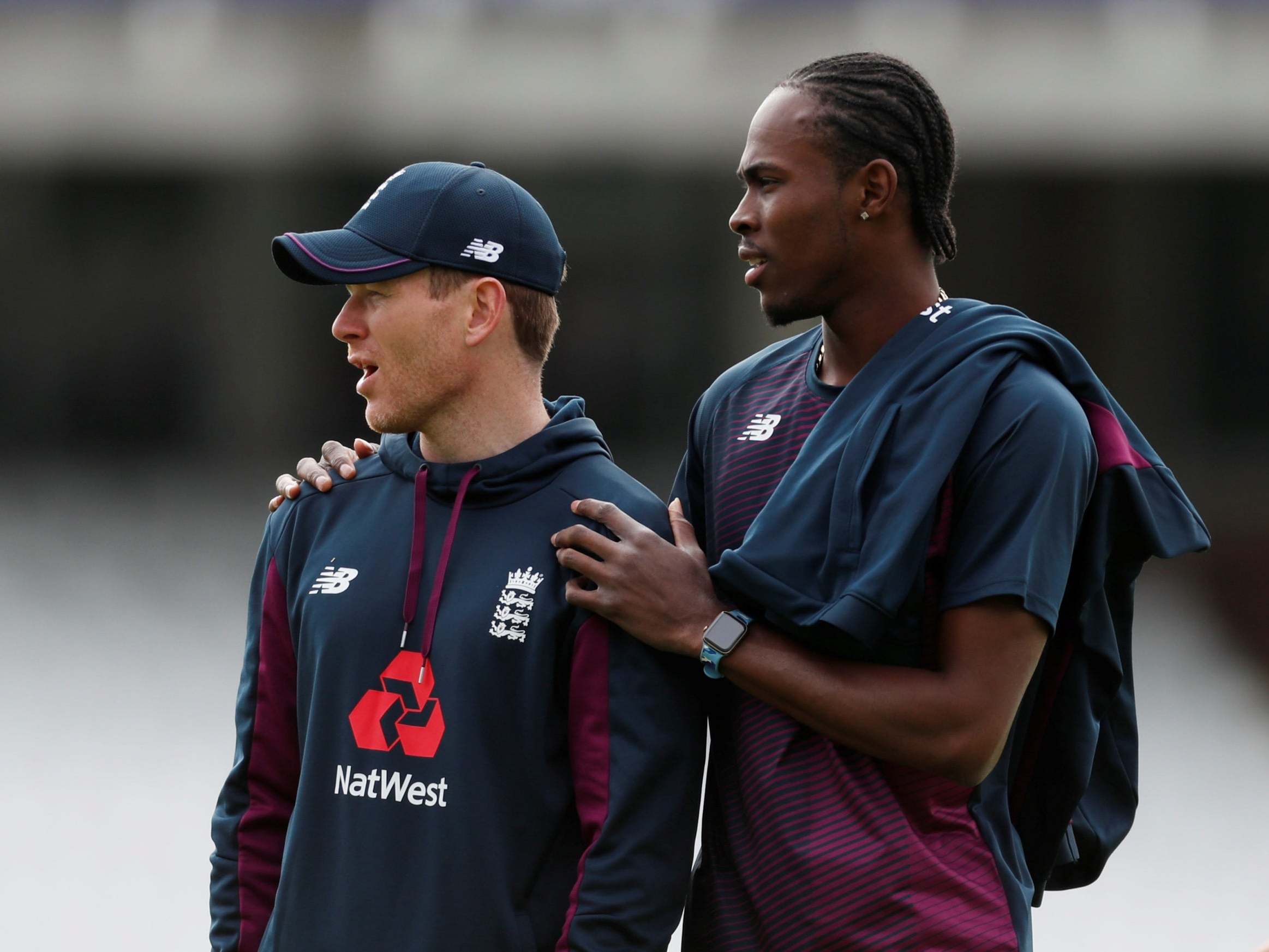Cricket World Cup 2019: How Eoin Morgan’s modern England side can recapture the nation’s imagination
Often you’ll hear it said that this is English cricket’s last chance to connect with its public. That may be true. But it’s also the best
The Cricket World Cup sneaks into our lives like a cat in the night, like a draught of air through a half-open door. For those of us who adore the game of cricket, the next seven weeks promise an almost unbearable tautness of anticipation, a sensory stimulus to the point of overload. For the majority who do not, it will pass largely unnoticed. And ultimately, the success of the 12th men’s World Cup will be judged on how much that gulf can be narrowed.
Ahead of the opening game between England and South Africa on Thursday morning, The Oval is bedecked in colour and stuffed with promise. Round the corner onto Kennington Road, however, and you’d barely know that one of the biggest shows in sport was right on the doorstep. Perhaps this is the real legacy of English cricket’s recession from the mainstream, its migration away from the national conversation and into the silos of the converted. The first hope is that this tournament can start the return journey. The second hope is that it’s not already too late.
What can be said with certainty is that this country will never have a better chance to capture the imagination, or a better team with which to do it. Regarded not so long ago as the poorest and least interesting of cricket’s three formats, 50-over cricket now has a strong case to be its most electrifying and shocking: the epic quality of Test cricket with the relentless violence of Twenty20, a game where the boundaries of the possible are being redefined on an almost monthly basis. And remarkably, the team at the head of the curve, taking ODI scoring to new and unprecedented heights, is England.
Yes, England. That England. The same England who haven’t been past the last eight since Neil Kinnock was leading the Labour Party. The same England who crashed out of the group stage four years ago in Australia. The same England whose disdain for the 50-over format was such that as recently as 2011, their best bowler Graeme Swann was openly calling for them to be abolished. Although of course, it’s not really the same England at all. Under captain Eoin Morgan, they have been galvanised and girded into something more: a team unencumbered by history, unburdened by tradition, unfettered by anybody’s expectations but their own.
This is a modern England team for modern times: a model of unity in a divided society. “I want our team to reflect the positive things about this country,” Morgan has said ahead of the tournament, and like all the best England teams, this one has a multiplicity of influences: town and country, north and south, foreign-born and home-grown. They attack, and when in doubt, they attack some more. On flat, well-trimmed surfaces and in front of sell-out home crowds, they have all the tools to conquer.
Take that top six, for example: Jason Roy, Jonny Bairstow, Joe Root, Eoin Morgan, Jos Buttler, Ben Stokes. There’s scarcely a player among them who wouldn’t walk into any ODI team in the world at the moment, and if they remain more of an unknown quantity on the slower surfaces they may encounter later in the tournament, then they are a rounded enough team to cope. The spin duo of Moeen Ali and Adil Rashid is among the best in class. The late addition of Jofra Archer has deepened an attack that can occasionally look a little toothless. If they play their best cricket from May to July, they will win. It’s as simple as that.
The main threats will come from India and Australia, who between them have won the last five World Cups. Much has been made of the return of Steve Smith and David Warner for Australia, but if anything it’s the variety and nous of their attack that is their sharpest weapon. India, led by the magnificent Virat Kohli, have a depth of mettle and confidence that only playing cricket for a nation of 1.3 billion can really give you. In the whippy, unorthodox Jasprit Bumrah they possess perhaps the finest death bowler in world cricket.

And yet in an open tournament, with all 10 nations playing each other in a group phase that will last longer than many wars, it’s easier to list the teams that won’t be challenging rather than the teams that will.
Sri Lanka will do well to avoid the wooden spoon, riven by discord and with an unbalanced squad filled out with a worrying number of Test match specialists. Bangladesh rarely fail to punch above their weight, and will be well supported by the diaspora population, but may struggle to impose themselves in English conditions.
Afghanistan have all the makings of a surprise package: big hitting at the top of the order, a strong core of experienced players and two of the world’s best mystery spinners in Rashid Khan and Mujeeb Ur Rahman. The West Indies can never be counted out, especially with the power of Andre Russell and Carlos Brathwaite, but you wonder if their attack has sufficient variety. Pakistan were surprise winners of the Champions Trophy two years ago, but – and these may well be famous last words – look as likely to flop as to fly this time around.

Which leaves the two nearly-sides: South Africa and New Zealand, two countries who continue to produce a conveyor belt of talented white-ball cricketers, even if most of them end up going abroad to make their fortune. Beaten finalists last time, New Zealand are a battle-hardened unit with plenty of aggression and plenty of spirit: a sort of proto-England, given the influence of Brendon McCullum’s 2015 team on Morgan’s. South Africa boast the magnificent Kagiso Rabada and the destructive hitting of Quinton de Kock, but – and this is unusual for a South African team – they look a touch lightweight this time round.
And so, let the feast begin. The tournament itself has been superbly organised, right down to the little touches like clustering fixtures at a certain ground in order to prevent pitches from overuse. The format, for all its detractors, feels like the best and fairest available. The grounds will be full or nearly full, and should England go on a run towards glory, it’s funny how these events can generate an unstoppable momentum, folding in the agnostic and the doubtful, barging its way onto your news bulletins and social feeds in a flurry of flag-waving patriotism and genuine, visceral entertainment. Often you’ll hear it said that this is English cricket’s last chance to connect with its public. That may be true. But it’s also the best.
Join our commenting forum
Join thought-provoking conversations, follow other Independent readers and see their replies
Comments
Bookmark popover
Removed from bookmarks